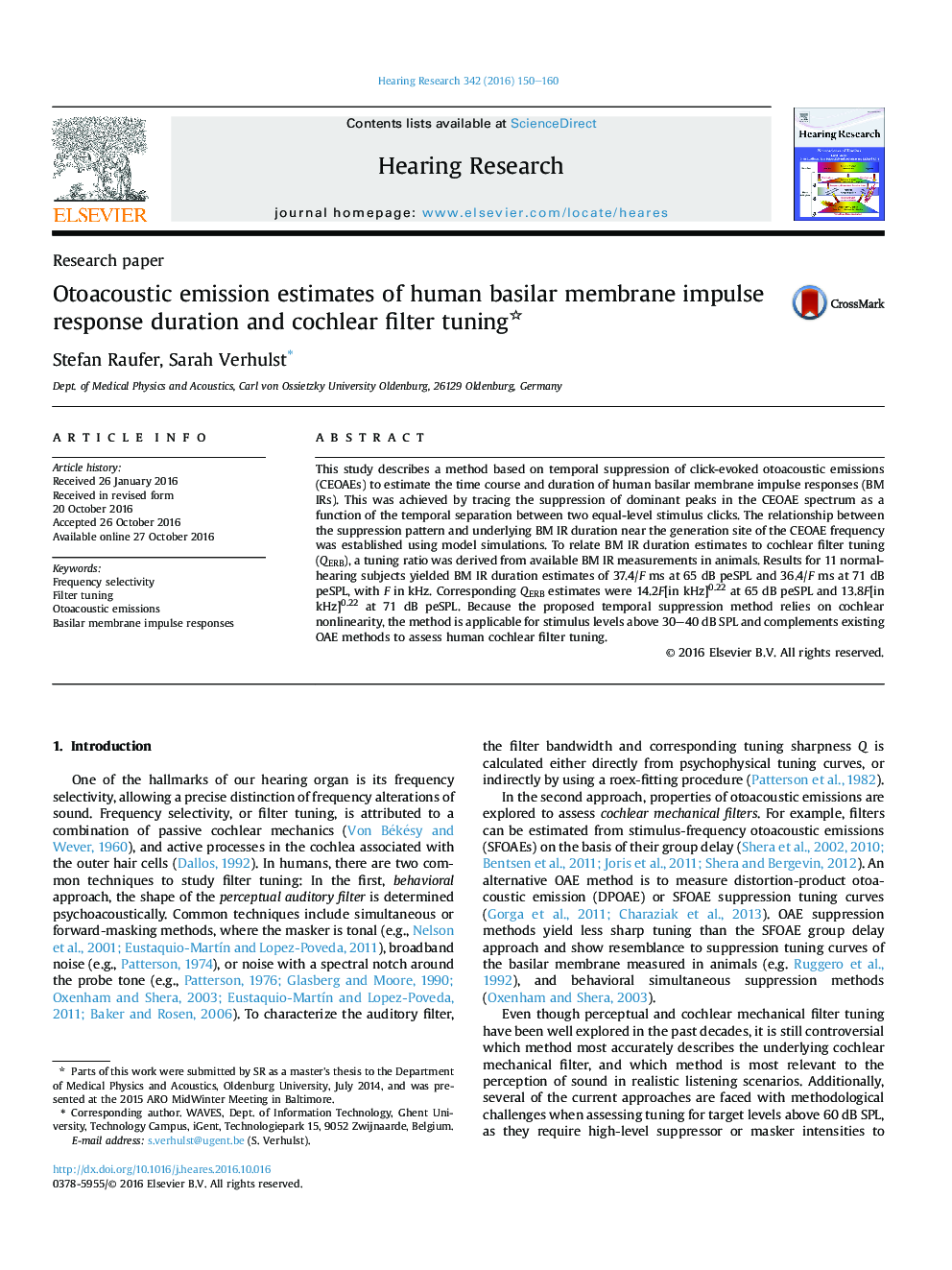| Article ID | Journal | Published Year | Pages | File Type |
|---|---|---|---|---|
| 5739431 | Hearing Research | 2016 | 11 Pages |
â¢Frequency selectivity is estimated on the basis of indirect measurements of basilar membrane impulse response durations.â¢The objective method complements existing OAE or behavioral methods to study frequency selectivity.â¢The CEOAE method can be applied over a large stimulus level range and is time efficient.â¢Our tuning estimates are compared to literature data to yield a comprehensive understanding of frequency selectivity.
This study describes a method based on temporal suppression of click-evoked otoacoustic emissions (CEOAEs) to estimate the time course and duration of human basilar membrane impulse responses (BM IRs). This was achieved by tracing the suppression of dominant peaks in the CEOAE spectrum as a function of the temporal separation between two equal-level stimulus clicks. The relationship between the suppression pattern and underlying BM IR duration near the generation site of the CEOAE frequency was established using model simulations. To relate BM IR duration estimates to cochlear filter tuning (QERB), a tuning ratio was derived from available BM IR measurements in animals. Results for 11 normal-hearing subjects yielded BM IR duration estimates of 37.4/F ms at 65Â dB peSPL and 36.4/F ms at 71Â dB peSPL, with F in kHz. Corresponding QERB estimates were 14.2F[in kHz]0.22 at 65Â dB peSPL and 13.8F[in kHz]0.22 at 71Â dB peSPL. Because the proposed temporal suppression method relies on cochlear nonlinearity, the method is applicable for stimulus levels above 30-40Â dB SPL and complements existing OAE methods to assess human cochlear filter tuning.
